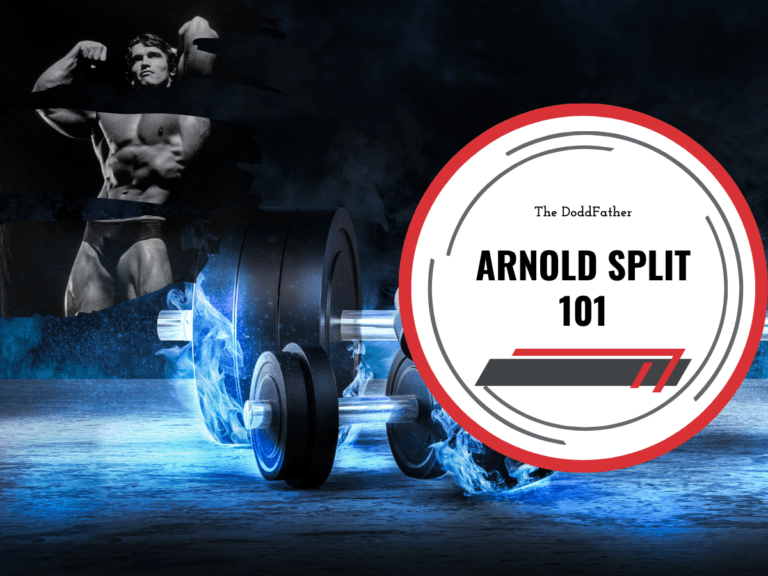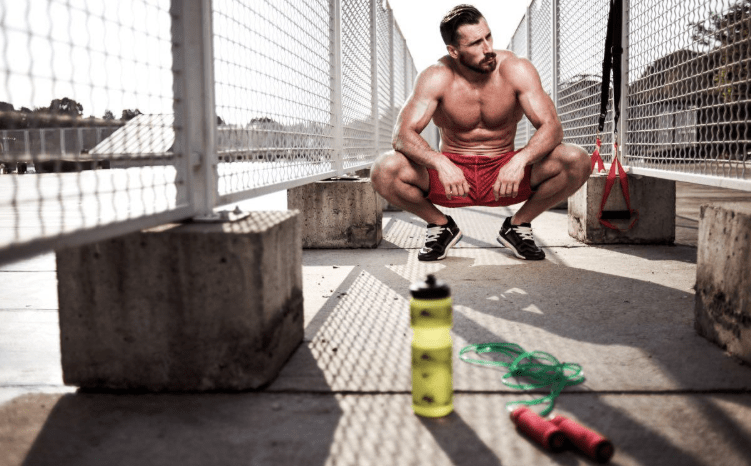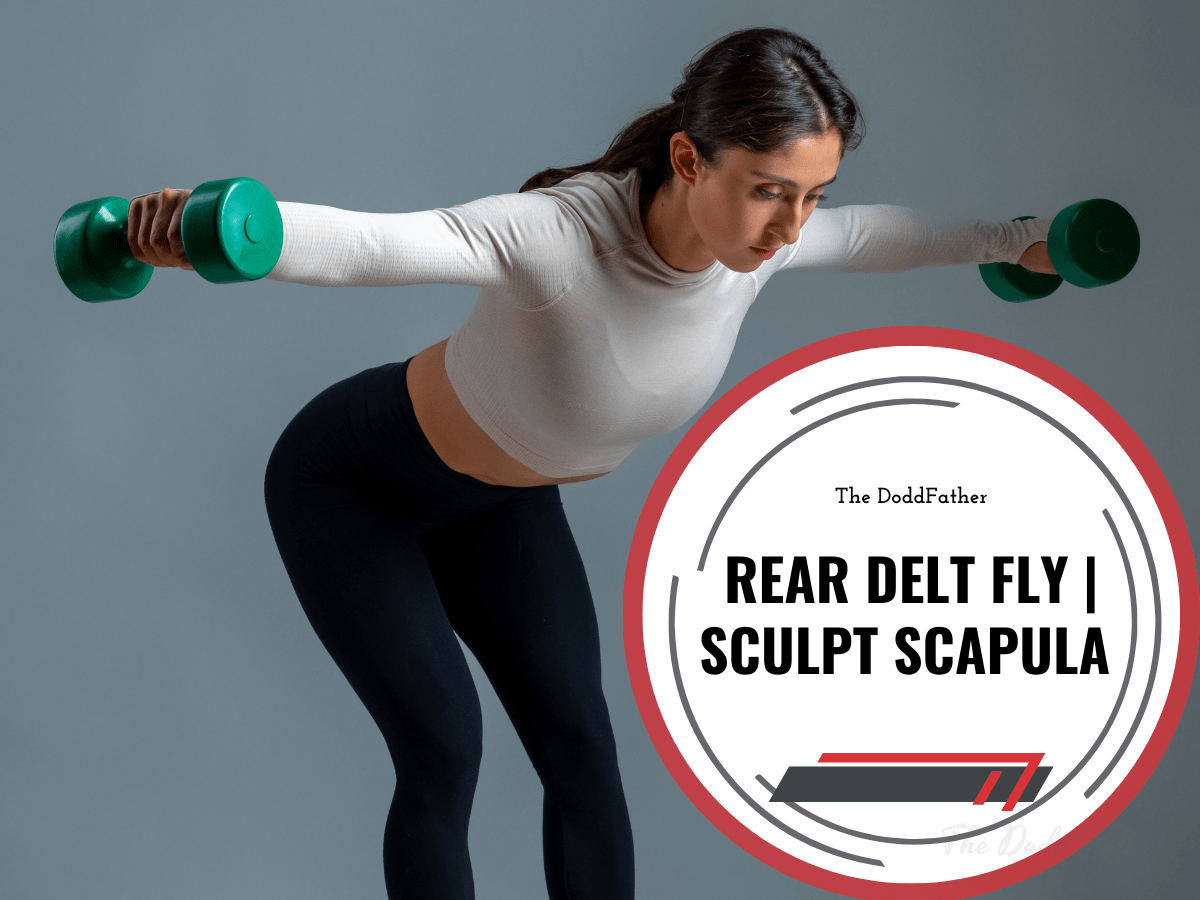
Cody Dodd is a NASM-certified personal trainer and Navy Command Fitness Leader who uses his fitness expertise to write fitness content for The DoddFather. Cody has transformed his physique and confidence by understanding the principles of exercise and fitness.
It all started with a radical fat loss of 55 pounds. From 225 to 170. From a kid who once couldn’t do a pull up, to knocking out 20 pullups in a Navy command competition while floating in the middle of the ocean.
He has a diverse writing and editing background that’s primarily focused on health and fitness, Navy life, and dad life. His work has been featured in Good Dads, as well as Platform Launchers, and Daddying.
Are you ready to upgrade your upper body workout? Try the rear delt fly. According to GQ, the rear delt fly is the best movement to build superhuman shoulders. This exercise focuses on the rear deltoid muscles. These muscles are important for a strong and balanced body. Do not let its simple look fool you—it can be challenging to get the form down!
Starting with the correct position and doing the exercise right will help you work those rear delts well. It will also protect your upper back from strain. Let’s get into the details and shape those rear delts to be just right!
Key Highlights
- Target those rear delts: This exercise is your ticket to sculpted rear deltoid muscles, often overlooked in standard routines.
- Master your form: It’s all about precision! Learn the right way to execute the rear delt fly to maximize results and avoid injuries.
- Variations for everyone: Whether you’re a beginner or a seasoned lifter, discover variations tailored to your fitness level.
- Boost your upper body game: Strong rear delts enhance your posture, athletic performance, and overall upper body strength.
- FAQs answered: We’ll address common questions and provide clear, concise answers to guide your rear delt fly journey.
Understanding the Rear Delt Fly
Editorial Note: We earn a commission from partner links on The DoddFather. Commissions do not affect our editors’ opinions or evaluations. Learn more about our Editorial Process.
The rear delt fly is a key exercise in many upper body workouts. It focuses on the rear deltoid muscles, which are three muscles that shape the back of your shoulders. These muscles are often not worked enough, but they are important for shoulder stability, good posture, and overall upper body strength.
While exercises like rows and overhead presses work the rear delts a bit, adding specific exercises like rear delt flyes is necessary for better growth. When you focus only on the rear delts, you help make these muscles stronger and better shaped. This leads to healthier shoulders, better sports performance, and a more balanced body.
Anatomy of the Rear Delt Fly: Muscles Engaged
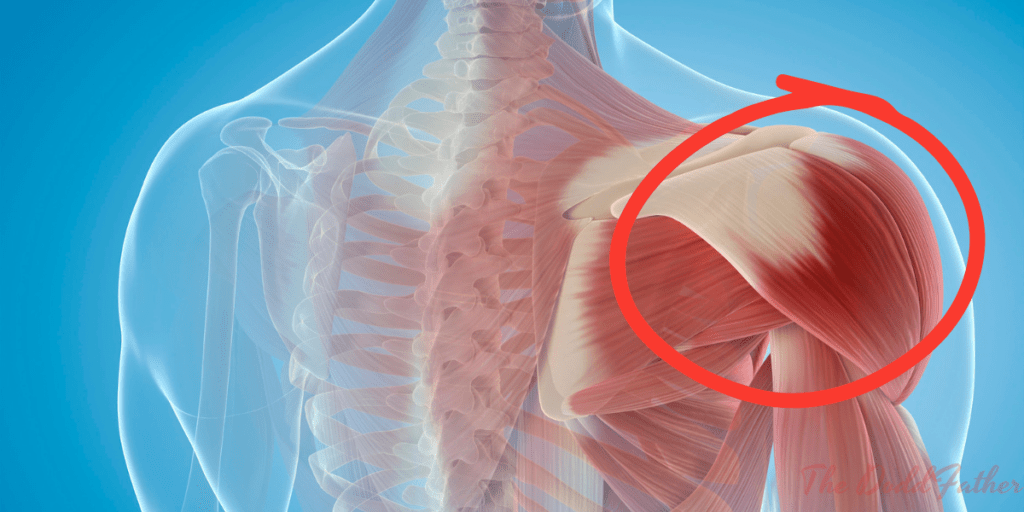
The rear delt fly works many muscles in your upper body. The main focus is on the posterior deltoid, which is one of the three main fibers in the deltoid muscle. These fibers help move your arms backward and rotate them.
This exercise also activates several upper back muscles, such as the trapezius and rhomboids. These muscles work together to move your shoulder blades, keeping your form stable during the exercise.
Additionally, the erector spinae, a group of muscles by your spine, plays an important role. These muscles stabilize your torso while you perform the rear delt fly. This helps protect your spine and keeps your posture safe and effective.
Rear Delt Fly: For Whom and Why?
The rear delt fly is not just for people who go to the gym a lot. It is a great exercise for anyone who wants to get fit and feel better. This exercise is especially good for those who want to fix muscle imbalances, improve their posture, and add to the workouts they already do.
If you often sit at a desk for a long time, the rear delt fly can really help you. It strengthens the muscles that pull your shoulders back. This can reduce the bad effects of poor posture, which lowers back pain and helps you stand taller and more confidently.
While big compound exercises are important for a good workout plan, isolated movements like the rear delt fly are key for targeting specific muscle groups. They help strengthen weak areas, making sure all your muscles grow strong and even. This can boost your overall strength and sports performance.
Step-by-Step Guide to Perfecting Your Form
Doing the rear delt fly correctly is very important for getting all its benefits and avoiding injuries. Even though the exercise looks easy, there are many small details that can affect your form.
Let’s look at the movement step by step. We will focus on the starting position, how to do it, and mistakes you should avoid. By understanding each part, you will be closer to mastering the rear delt fly and using it to its full potential.
Starting Position and Execution
Start by standing with your feet hip-width apart. Hold a pair of dumbbells and keep a slight bend in your elbows. Hinge at your hips. Make sure your back is flat and your core is engaged. Your torso should be close to parallel with the floor, and the dumbbells should hang directly under your chest.
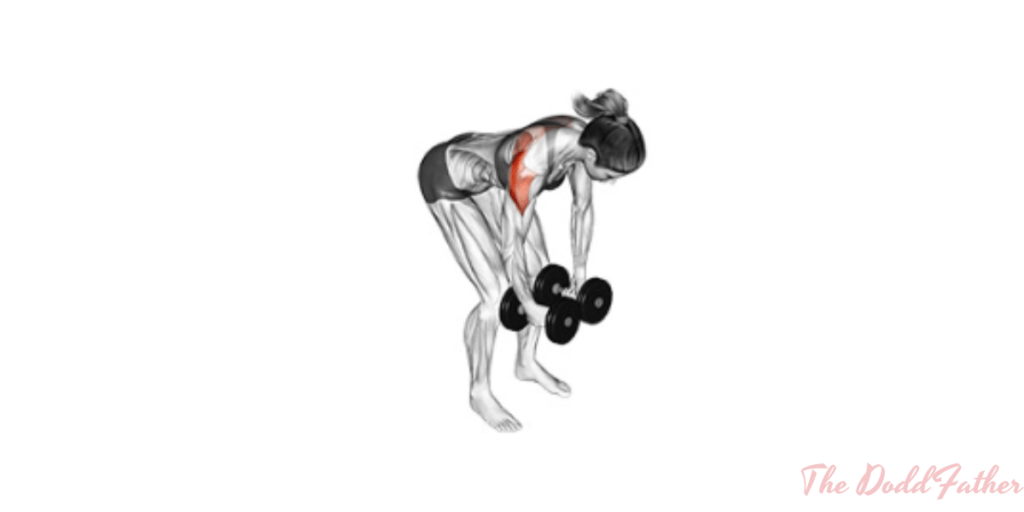
Next, start the movement by raising your arms out to the sides in a wide arc. Focus on using your rear delts to lift the weights. Don’t use momentum. Keep the slight bend in your elbows during the whole exercise. Your range of motion should let the dumbbells go a bit above shoulder height.
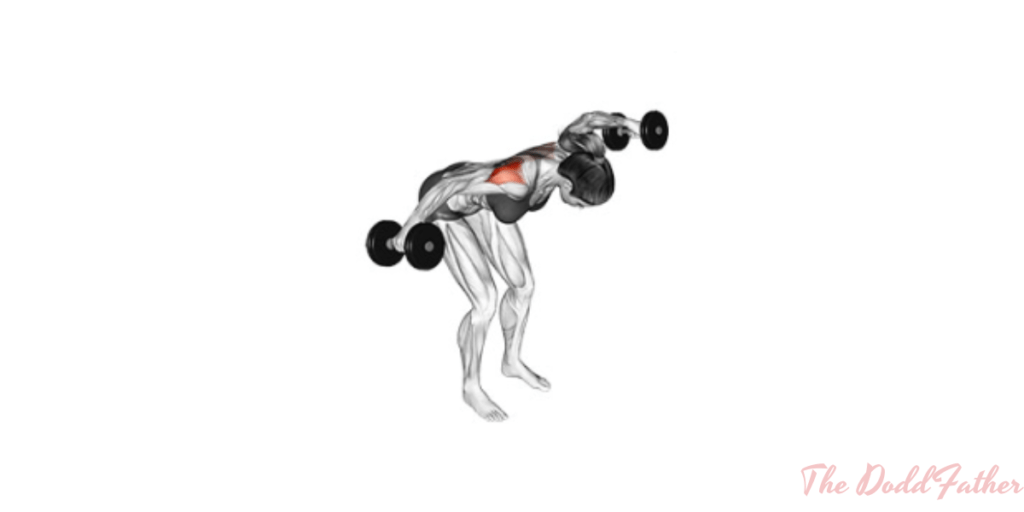
As you lift the weights, imagine squeezing a pencil between your shoulder blades. This mental image helps you work the right muscles well. Slowly lower the dumbbells back to the starting position. Control the movement all the way down.
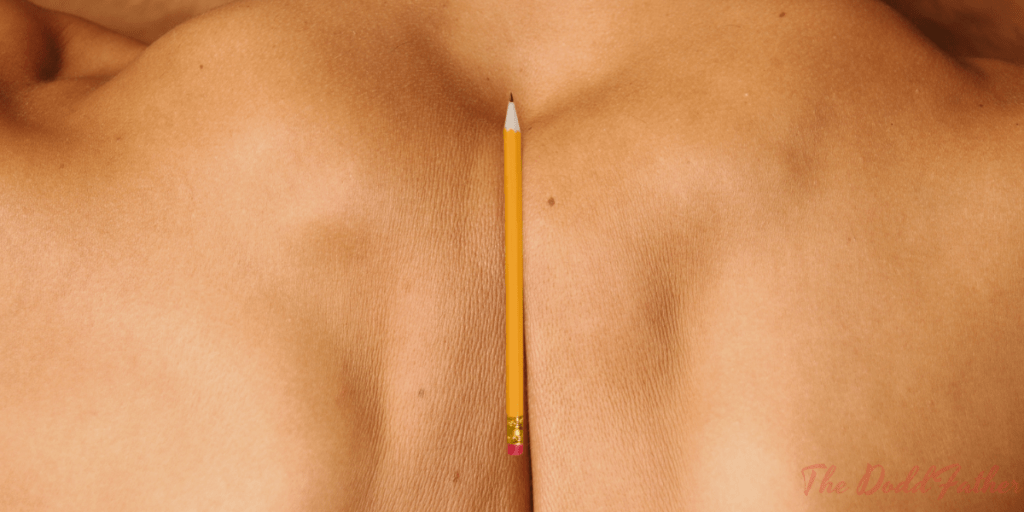
Common Mistakes and How to Avoid Them
The rear delt fly is mostly safe, but doing it wrong can cause injuries, especially to your lower back and shoulders. A common mistake is arching your back while lifting weights. This puts too much pressure on your lower back and may cause pain or injury. Keep your spine straight during the exercise to prevent this.
Another mistake is swinging the weights up with momentum. This not only makes the exercise less effective but also raises the risk of hurting your shoulders. Focus on slow and controlled movements. Use your rear delts to lift and lower the weights properly.
Finally, don’t lock out your elbows at the top of the movement. Keep a slight bend in your elbows. This helps protect your elbow joints and keeps tension on the muscles you want to work. It will maximize muscle activation and growth.
Amplifying Your Routine with Rear Delt Fly Variations
Once you know how to do the regular rear delt fly, many different ways to do it await you. These changes will test your muscles and keep your workouts exciting. You can use different equipment, angles, or body positions to hit the rear delts from various angles. This helps your muscles grow and makes your shoulders stronger.
It does not matter if you are new to working out or have been doing it for a long time. There is a rear delt fly variation made for your fitness level. Adding these variations to your routine stops you from getting stuck, makes workouts fun, and helps you keep moving toward your fitness goals.
Incorporating Equipment and Angles
One easy way to change the rear delt fly is to use an incline bench for support. This version is called the incline rear delt fly. It puts less strain on your lower back and lets you move more. Just set the incline bench to a low angle between 30 to 45 degrees. Lie face down with your chest on the pad and do the fly movement like normal.
For a new challenge, try the cable rear delt fly. Using a cable machine instead of dumbbells gives you constant tension during the exercise. This helps work your rear delts better. Set the cable pulley low and do the fly movement while keeping a slight bend in your elbows.
You can also change the angle of your body. Instead of leaning forward, stand straight and hinge at your hips until your body makes a 45-degree angle with the floor. This method, known as the high-incline rear delt fly, focuses on the upper part of your rear delts, adding some variety to your workout.
Adaptations for Beginners to Advanced Lifters
Beginners who are new to the rear delt exercise should use lighter weights. It is important to focus on using the right form first. Once you feel comfortable, you can slowly increase the weight or resistance. Using many exercises that work the rear delts from different angles can help with muscle growth. It also helps to stop muscle imbalances.
Intermediate lifters can try harder variations, like the incline rear delt fly, the cable rear delt fly, or single-arm options. You can mix it up by using different rep ranges. Adding techniques like drop sets or supersets can help your muscles grow even faster.
For advanced lifters, the rear delt fly can fit into more complex training plans to improve size and strength. You can think about adding resistance bands for extra tension. Using advanced methods, such as changing the tempo, is a good idea too. Try out unique options like the rear delt row. Memberships like Anabolic Aliens offer detailed workout plans and support for more advanced fitness levels.
Conclusion
In conclusion, doing the rear delt fly can really help boost your shoulder strength and upper body development. It’s important to know the right form, work the right muscles, and steer clear of common mistakes to succeed. You can make your workout more effective by adding different variations and adjusting for your fitness level.
Consistency and gradually increasing the challenges are important for getting the best results. Always pay attention to your body, focus on your technique, and push yourself to achieve more in your fitness journey. Keep pushing your limits and enjoy a great rear delt workout.
Frequently Asked Questions
What Are the Key Benefits of Performing Rear Delt Flies?
Rear delt flies help make the rear deltoid stronger. This is a small but important muscle in your shoulder. Good strength in this area helps keep your shoulders healthy and stable. Doing this exercise can stop muscle imbalances. It also helps your posture and improves your ability to do compound exercises, such as the dumbbell row.




